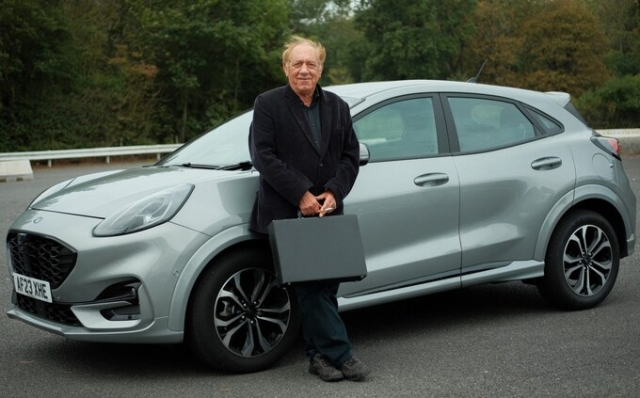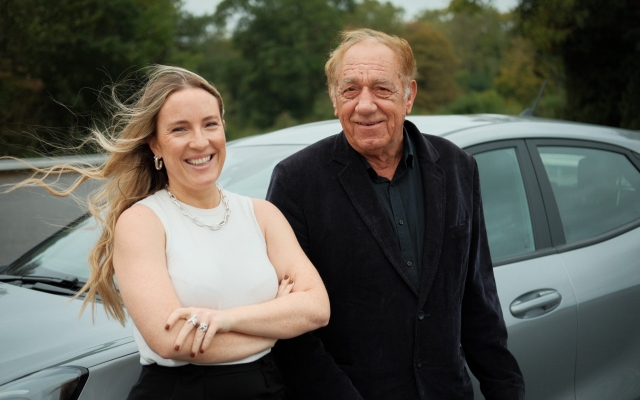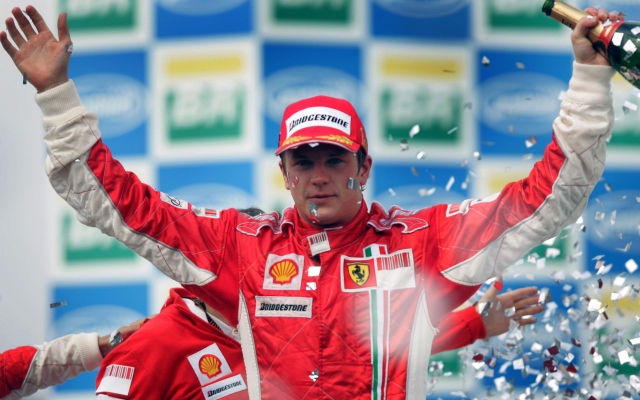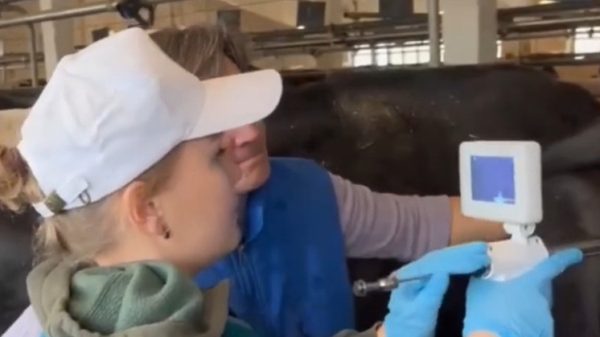 The humble demeanor belies the driving genius of Rob Wilson. Photo: Richard Bradley
The humble demeanor belies the driving genius of Rob Wilson. Photo: Richard Bradley
You may not have heard of racing coach Rob Wilson, but you've definitely seen his work. He's the man on the other end of the phone when a track career is in jeopardy and is credited with breathing life into struggling Formula One drivers such as Daniel Ricciardo and Lance Stroll, pushing Alex Albon to the forefront of Williams' revival and mentoring Liam Lawson is coming off an impressive rookie season after being called up unexpectedly. It corrects clogged corners, eliminates understeer and saves people from endless DNFs — and it does it all, quite incredibly, in a Ford Puma.
In any case, it is difficult for a layman to track down. Wilson is not called “Formula 1’s secret weapon” for nothing. You won't see him in the pit lane, he doesn't race much these days. It is not advertised and is barely googleable. But with the help of a few insiders, I spent a day under his tutelage, experiencing first-hand what can be called a mixture of hard physics, a powerful personality and a little magic.
At first glance, Wilson is a good-natured 72-year-old chain smoker. If his hands aren't on the steering wheel, they probably have a cigarette in them, such is his deep connection with nicotine. He appears to greet me with a nondescript black briefcase, a Nokia 6210 and thin red hair that flutters in the wind over his corduroy jacket. He is a ridiculous figure — a caricature compared to the sleek, chrome-plated, corporate, recognizable figures of Formula One. But judging this book by its cover would be a huge mistake. Make no mistake, this man is a kingmaker. The world's best racers fly thousands of miles for Wilson's magic.
 Wilson has trained some of the world's greatest racing drivers. names in motorsport, and now Natasha Bird. Photo: Richard Bradley
Wilson has trained some of the world's greatest racing drivers. names in motorsport, and now Natasha Bird. Photo: Richard Bradley
His list of protégés reads like a who's who of auto racing. Over almost 50 years, the New Zealander has courted more than 75 Formula One stars, including at least half of the current grid. But before he became a coach, he was an impressive driver himself, recording wins in Formula Ford and Formula 3, holding his own at Le Mans and beating some of history's greats, such as Gerhard Berger, Nelson Piquet and Michelle Alboreto. He even came within a hair's breadth of entering Formula 1, securing a seat four times, only to have it snatched from under him at the last minute by someone with better sponsorship deals.
Others would be bitter, but Wilson isn't worried about what could have been. “This was all a rehearsal,” he says, “for this.”
I've come to find out exactly what «it» is because his particular teaching style is legendary, but no one seems to be able to adequately articulate it. Perhaps the person himself will cope with this task better.
“There are several aspects to driving fast,” he explains from the boardroom behind the track at Donington Park. «It's got everything ABC to do with it.» For the uninitiated, this is acceleration, braking and steering. “Anyone can teach it,” he says dismissively. “Of course, you can look for higher speed mid-corner or release the brakes later to avoid understeer, but the answer is not in the squiggly lines on the screen — the data download is masquerading as engineering. This is when you feel it in your bones.”
“Translating messages from the body to the machine”
Wilson's knowledge of automotive science is deep. He can tell you the least economical places to find speed: «Cars don't really speed up when they're leaned over,» uses useful analogies about splashing glasses of water, and gives me his «flat car» principle, which is how corners go like this. if they were tilted. 50p pieces. But his real genius is esoteric. He talks about cars as if they were sentient, and asks drivers to «communicate» with delicacy of movement, «transmitting small messages through the body into the plane of the car.»
It's something you can't really comprehend until you put it into practice, and that's why it uses an entry-level road car with a manual gearbox — so that every whir of a clutch disc, crunch of a bad gear or squeal of tires passes through you. Thanks to the amount of feedback in the Ford Puma, you'll be much clearer when you find what Wilson asks you to look for. “You become one with the machine, the machine becomes one with the surface, you become one with the surface and can almost transcend the machine,” he says, and it sounds simple.
The first couple of laps around the track feel as crunchy and creaky as possible. I'm new to heel-toe shifting, so it takes forever to learn how to use the pedals correctly. Eager to get to something good, I ironically ask him to treat me the same way he treated Kimi Raikkonen, and he tells me with a smile that when he did have Raikkonen on the hot seat, he also made him repeat the same the same circle again and again until it clicked. Eventually, after perhaps the hundredth approach, I fly out of the turn, but it feels a little different: a feeling of rhythm, rather than a full-body turn. He taps my leg hard and says, “This is it.”
 2007 World Champion Kimi Raikkonen — one from a number of stars who have benefited from Rob Wilson's expertise. Photo: Getty Images/Evaristo Sa
2007 World Champion Kimi Raikkonen — one from a number of stars who have benefited from Rob Wilson's expertise. Photo: Getty Images/Evaristo Sa
“Now do it again,” he grins wryly. This is the essence of his method. It works with you tirelessly, slowing you down to examine every part of your driving, correcting the smallest movements of the steering wheel, removing everything cumbersome from your pedal work, asking you to do all the hard work so that the car barely knows it's happening on a racetrack, and then , once you master it, he forces you to repeat it until it becomes ingrained in your DNA. His rare gem in the crazy world of Formula 1 is patience.
Another thing he has in abundance is personality. After spending my fifth hour in this man's company, I'm quite convinced that half the reason drivers come back to him is because of his anecdotes. He regales me with stories of his rock band (he was in several bands, including Edison Lighthouse, which hit number one in 1970) partying until 3 a.m. before the race, ripping off Stefan Johansson's Marlboro sponsorship to trade them for Rothmans at the local store and sitting in Nigel Mansell's car, discussing who was in deep financial trouble when they competed in Formula 3. His magnetism is what allows him to pour water on some of Formula One's famous egos.
«When they arrive, they become the most important people in the world,» he says. “They strive to show how fast they are, what incredible reflexes they have. And I need to get rid of all this.» He showed empathy in helping Stroll deal with disappointment and was so kind to Nico Rosberg that when the German won the world championship in 2016, Wilson was one of the first people he thanked.
Experts have studied Wilson's methods . and leave dumbfounded. The lines on the graph look confusingly similar before and after the workout, although one of the laps is a few seconds faster. His doctrine is what telemetry can't tell you: the key to driving fast isn't speed; The key to driving faster is driving better. Call it magic, generosity or intuition, but there seems to be no one in the world who can do what he does.


























































Свежие комментарии